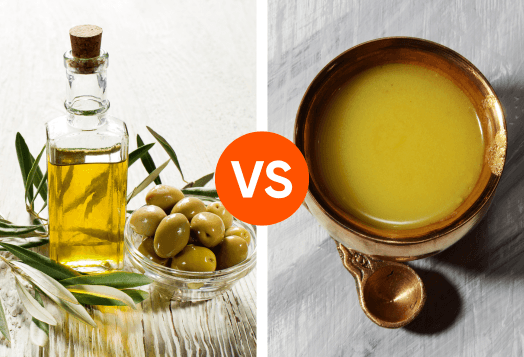Taxes can be tricky, but your choice of tax regime doesn’t have to be. With two options on the table, the old tax regime and the new tax regime, most taxpayers find themselves wondering which one to choose. And while both paths lead to the same destination (paying your taxes!), the route you take can make a big difference to your bank balance.

Understanding the Basics: Old Tax Regime vs New Tax Regime
India’s tax system offers a choice: stick with the old regime, which rewards savings and investments, or choose the new regime, which offers lower tax rates and a cleaner, simpler process.
Let’s unpack both so you can decide which suits your financial habits best.
The Old Tax Regime - Built for the Savers and Planners
The old regime has been the traditional choice for Indian taxpayers. It follows a deduction-based structure, where your taxable income can be significantly reduced by claiming various exemptions and deductions. This includes popular ones under:
Section 80C (for investments in PPF, ELSS, life insurance, etc.)
House Rent Allowance (HRA exemption)
Leave Travel Allowance (LTA)
Section 80D (medical insurance premiums), and more.
If you are someone who actively saves and invests in tax-saving instruments, this regime can reduce your taxable income considerably, sometimes even bringing you into a lower tax bracket.
That said, the tax slab rates in the old tax regime are higher. So it only works out in your favour if you're actually using these deductions. The more you invest and plan, the more you benefit.
The New Regime - Clean and Hassle-Free
The new tax regime, introduced under Section 115BAC, takes a completely different approach. It offers lower income tax rates across slabs but removes almost all the commonly claimed deductions and exemptions.
The idea here is simplified taxation. Fewer calculations, no need to track proofs, and quicker returns filing. This regime is refreshingly straightforward for many salaried individuals, especially those who don’t invest heavily in tax-saving products.
For example, if you're a young professional without major expenses or investments (like home loan EMI or life insurance), and your income is straightforward (only salary without HRA or deductions), then the new tax regime might result in lower taxes and a stress-free filing experience.
From FY 2023-24, the new regime has also started offering a standard deduction of ₹50,000 for salaried individuals and pensioners. This amount has been increased to Rs.75,000 for the new regime only with effect from FY 2024-25, making it more appealing than before.

Bottom line:
The choice between old vs. new regime depends on your personal income structure and financial habits. If you claim a high amount in deductions and exemptions, the old regime might offer bigger savings. If you prefer simplicity and don’t claim many deductions, the new regime could work better for you, especially now that it includes some basic benefits like the standard deduction.
Income Slabs Comparison: Old vs. New Tax Regime
Understanding tax slab rates is key to knowing your actual tax burden. Here’s a look at how both regimes treat different taxable income brackets for FY 2025-26:
Income Range | New Regime |
Up to ₹4 lakh | NIL |
₹4 Lakhs - ₹8 Lakhs | 5% |
₹8 Lakhs - ₹12 Lakhs | 10% |
₹12 Lakhs - ₹16 Lakhs | 15% |
₹16 Lakhs - ₹20 Lakhs | 20% |
₹20 Lakhs - ₹24 Lakhs | 25% |
Above ₹24 Lakhs | 30% |
Under the new regime, individuals with income up to ₹12 lakh are eligible for a rebate of ₹60,000 under Section 87A, effectively reducing their tax liability to zero.
Income Range | Old Regime |
Up to ₹2.5 lakh | NIL |
₹2.5 lakh - ₹5 lakh | 5% |
₹5 lakh - ₹10 lakh | 20% |
Above ₹10 lakh | 30% |
Which Regime is Better for You? A Quick Test
Wondering which is better, old vs. new tax regime? Here’s a simple way to find out:
Stick to the Old Tax Regime if:
You can claim deductions over ₹2.5 lakh, such as 80C, 80D, HRA, interest on education, or home loans.
You actively invest in PPF, ELSS, insurance, or NPS for deduction-based savings.
Opt for the New Tax Regime if:
Your salary is your only income.
You don’t make use of many exemptions and prefer simplified returns and lower tax rates.

Common Myths About the New Tax Regime – Busted
Let’s clear up some confusion around the new regime and its comparison with the old regime:
Myth 1: The new regime is always cheaper.
Not true. The new tax regime does offer lower tax rates across various income brackets, but that doesn’t necessarily mean it’s always the better option.
If you’re someone who actively claims deductions, the old regime might still work out cheaper for you. Deductions help reduce your taxable income, which can lead to significant savings, especially for higher-income earners who invest in tax-saving instruments.
Myth 2: The old regime is going away.
Currently, both the old and new regimes are here to stay, at least for the foreseeable future. There’s no official announcement saying that the old regime will be phased out. If you’re a salaried individual, you can choose between the two regimes every year when filing your Income Tax Return (ITR).
Myth 3: The new regime is only for salaried people.
While the new tax regime is particularly appealing to salaried individuals who don’t have many deductions, it’s not exclusive to them. Under Section 115BAC, the new tax regime is available to all taxpayers, including freelancers, consultants, and business owners. So, whether you work for a company or run your own business, you can choose the new regime if it suits your tax situation.
The Right Choice
When it comes to taxes, the smarter choice isn’t old vs. new; it’s about what fits you best. Like deductions and planned savings? The old regime has your back. Prefer simplicity and lower rates? The new regime is your friend. Run the numbers, know your deductions, and choose wisely. The right pick can save you thousands and make tax season a lot less taxing!




